Interesting Facts about Kangra
- Kangra Fort is the largest fort in the Himalayas and probably the oldest fort in India.
- Masroor Rock Cut Temple, also known as Himalayan Pyramids and wonder of the world. The temple is likely to contend for the UNESCO World Heritage Site.
Kangra is the place for all those who are looking for rejuvenation and relaxation. The vistas of the city are mystic and simply mesmerizing. Kangra is a small hill station perched at very a high altitude. All thanks to its cultural and historical significance, the hill station is visited by numberless people from across India.
The history of Kangra valley dates back to the Vedic times, more than 3500 years ago. Once upon a time, Kangra was home to the world's oldest serving Royal dynasty- the Katoch. The town was also ruled by some great invaders like Mohammed Ghazni in the 11th century, Mohammed Bin Tuglaq in 1337, Raja Purab Chand in 1351 and finally, after the first Anglo-Sikh War it was acquired by the British people. Despite the blitz and political turmoil's, the region has continued to develop and flourish.
Ever seen an architecture completely made of rock? Masroor rock cut temples in Kangra are one such example and are the best epitome of India's fine architecture. There are around 15 rock cut temples within the giant complex, which are believed to have been made by the Pandavas when they were in exile. Each temple is carved and decorated with sculptures. The view of snow-clad Dhauladhar is amazing from the temple premises.
The tiny hill station is guarded by the Kangra fort. One can even see the traces of Kangra Fort in the war records of great Alexander. The land has witnessed the rule of multiples invaders like the Tuglaqs and Mughals. The fort is historically significant and houses some exquisite stone sculptures, carvings, idols and other artefacts.
The district of Kangra is also called Dev Bhoomi as it has numerous temples dedicated to different Gods of Sanatan Dharma. Kangra attracts huge number of devotees from across India to pay votive offerings to their deities. The hilltop is the homeland of multiple gods and goddesses.
One of the best examples of Goddess power and supremacy is the Bajreshwari Devi temple which is located in Kangra district. The temple is one of the 51 Shaktipeeths of Goddess Sati or Shakti. Baijnath Shiv Temple in Kangra is dedicated to Lord Shiva. The temple is believed to be one of the twelve jyotirlingas. Kangra is the house of the Gods; there are many other shrines in and around Kangra, namely Chintpurni Temple, Chamunda Devi Temple, Jwalamukhi, etc.
Kangra is also a major stopover for all the enthusiasts of adventure. The Kangra valley boasts geological beauty and trekking facilities which is so fantastic that visitors can be lulled into a false sense of security. Be it mountaineering, hand gliding, Paragliding or Para Sailing, the daunting dunes will never disappoint adventure aficionados. Tourist can also visit the Maharana Pratap Sagar Lake which is an extraordinary destination for bird-watchers and water sports lovers. Various water sports like canoeing, rowing, sailing, and water skiing, apart from swimming are organized here. One can catch the glimpses of endangered birds, like Northern Lapwing, Spot-Billed Duck, and many more while walking along the lakeside.
The other main attractions that make the place mesmerizing are Taragarh Palace Hotel, The Judges Court, Pragpur, Dehra Gopipur, and many more. Kangra is famous for its designer shawls and miniature paintings as well.
It is time for all the travellers to soak in the charming and charismatic landscapes of Kangra. Embark on a journey to Kangra during the scorching summers to beat the heat or to enjoy its heavenly beauty during the winters.
Adventure activities
- In Kangra, Maharana Pratap Sagar Lake is an extraordinary destination for the adventure fanatics to feel the adrenaline rush. Various water sports like canoeing, rowing, sailing, and water skiing, apart from swimming are organized here.
- Kangra valley is yet another famous place to indulge in adventure and sports activities like mountaineering, trekking, rock climbing and fishing; it is this valley which hosts annually hang gliding rally.
Where to stay
Hotel The Grand Raj (Dharamshala Road), Nature Bloom Hotel and Resorts (Dharamshala Palampur Road), Chandan Palace Hotel (Palampur Bus Stand), UNA Comfort Dee Jay Hotel (Dhaliara) and WelcomHeritage Taragarh Palace Hotel (Village & P O Taragarh) are the popular medium to budget accommodation options available in the city. Many hotels provide extra facilities like Ayurvedic massages, fitness centers, horse riding and swimming pools. Requirements like high speed internet and television are found in most.
Where to eat
Kumar sweets and fast food (Near Hanuman Mandir), Atithi Restaurant (Dharamsala Road) and Annapurna Bhojanalya (VPO Channi) are some of the places to enjoy some figure-licking delicacies. Some of the major local dishes offered in Kangra are Kalan ke pakode (grass pea fritters), Bhruni (cooked fig leaves in dry gravy), Barah ki chutney (fresh rhododendron pickle), Seera (Sweet soup of ground wheat), Phafru ka sag (buckwheat cooked in its own gravy with onion, garlic and other spices), etc.
Weather and Climate
Winters (October to March): 0-20°C
Summers (April to September): 22°C-38°C
Best time to Visit: September to June
How to Reach
By Airways: The town has its own domestic airport, Gaggal airport. The airport is located at a distance of 13 Km from the city of Kangra. Chandigarh, Amritsar and Jammu airports are also in the vicinity of Kangra.
By Railways: Nearest railway station is in Pathankot which is around 90 km away from Kangra. Taxis are available from the railway station to the city.
By Roadways: Kangra is well connected by state owned transports. Buses run from Kangra to various places, like Dharamsala, Palampur, Pathankot, Jammu, Amritsar and Chandigarh.
| City |
Distance |
| Pathankot |
86.6 km |
| Dalhousie |
118 km |
| Jammu |
194 km |
| Amritsar (Punjab) |
195 km |
| Chandigarh |
220 km |
| Shimla |
221 km |
| Manali |
238 km |
| Srinagar (Jammu and Kashmir) |
442 km |










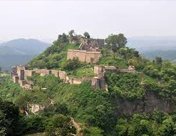
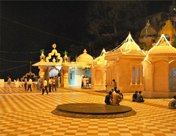
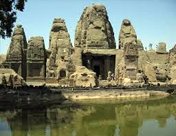



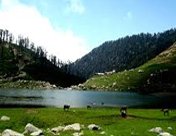


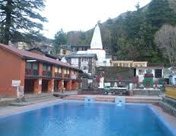


 Plan Trip
Plan Trip Call Us
Call Us Packages
Packages Home
Home